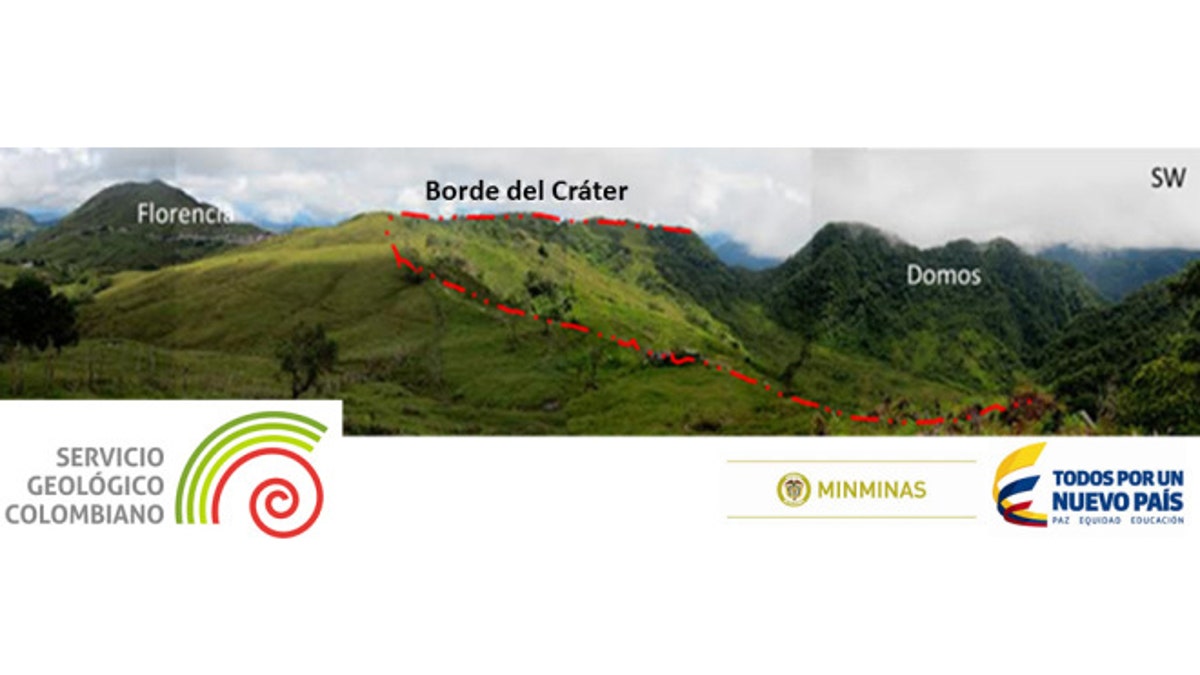
(SERVICIO GEOLOGICO COLOMBIANO)
One would think given all the technology and research that scientists would have pretty much have figured out where all the volcanoes are in the world. Well, that’s not the case.
Geologists working at Colombia’s Geological Service (SGC) announced earlier this week that an overgrown mound in the central part of Latin American nation is actually a dormant but highly explosive volcano. Locals in the town of Florencia said the hill was so unimpressive that it didn’t even warrant a name, but the newly found volcano has since been dubbed El Escondido or "The Hidden."
"It’s not very distinctive," Marta Calvache, the director of geological threats at the SGC told the Miami Herald. "It doesn’t have that beautiful conical shape that people associate with volcanoes."
The volcano is less than 6,000 feet high – one of the smallest in Colombia – and is completely immersed in thick vegetation that even covers the volcano's lava dome.
The volcano itself is known as a pyroclastic ring (i.e. explosive debris) that is about two kilometers in diameter with lava domes filling in part of the crater. While there isn’t a whole lot known about its full volcanic history, the SGC identified at least one pumice fall deposit near the crater and hot springs surrounding the newly-identified volcano.
When the last eruption of El Escondido occurred is still not known, but researchers think that it happened around 30,000 years ago and that its long period of inactivity is something to worry about. Unlike the active volcanoes in Hawaii and Italy that tend to be more predictable, scientists compared El Escondido to Mt. St. Helens in Washington State, which erupted in 1980 and killed dozens of people.
"Those erupt with more frequency but they’re not as explosive as the ones that stay dormant for thousands or even tens of thousands of years," Calvache said of the more active volcanoes.
Another oddity about El Escondido is that it is located far away from Colombia’s main volcano hotspots (pun totally intended). While most volcanos in Colombia lay along the country’s Central and Western chains of the Andes and usually hug the peaks, El Escondido was found along the flanks of the Eastern Andes.
There is currently no immediate danger for people who live around El Escondido as there are no signs that it is coming back to life right now, but that does not mean that residents should be wary of early warning signs of an eruption, like an increase in earthquakes or new gas emissions from the hot springs around the volcano.
People in the town of Florencia, in the department of Caldas, said they always thought that a volcano might be hidden close by because of the abundance of hot springs.
"It doesn’t spew lava, there’s no smoke, nobody has really paid attention to it," said Conrado Rojas, the head of the township.
While it may seem strange that researchers in Colombia are still unearthing volcanos, the field of volcanology in the country is still in its nascent stages and really only began 30 years ago following the devastating eruption of the Nevado del Ruiz volcano, which buried the town of Armero and killed an estimated 25,000 people. Since then Colombian scientists have found 32 volcanoes across the Andean nation.
"All over Colombia there are people looking at volcanoes," Calvache said "they just think they’re mountains."





















